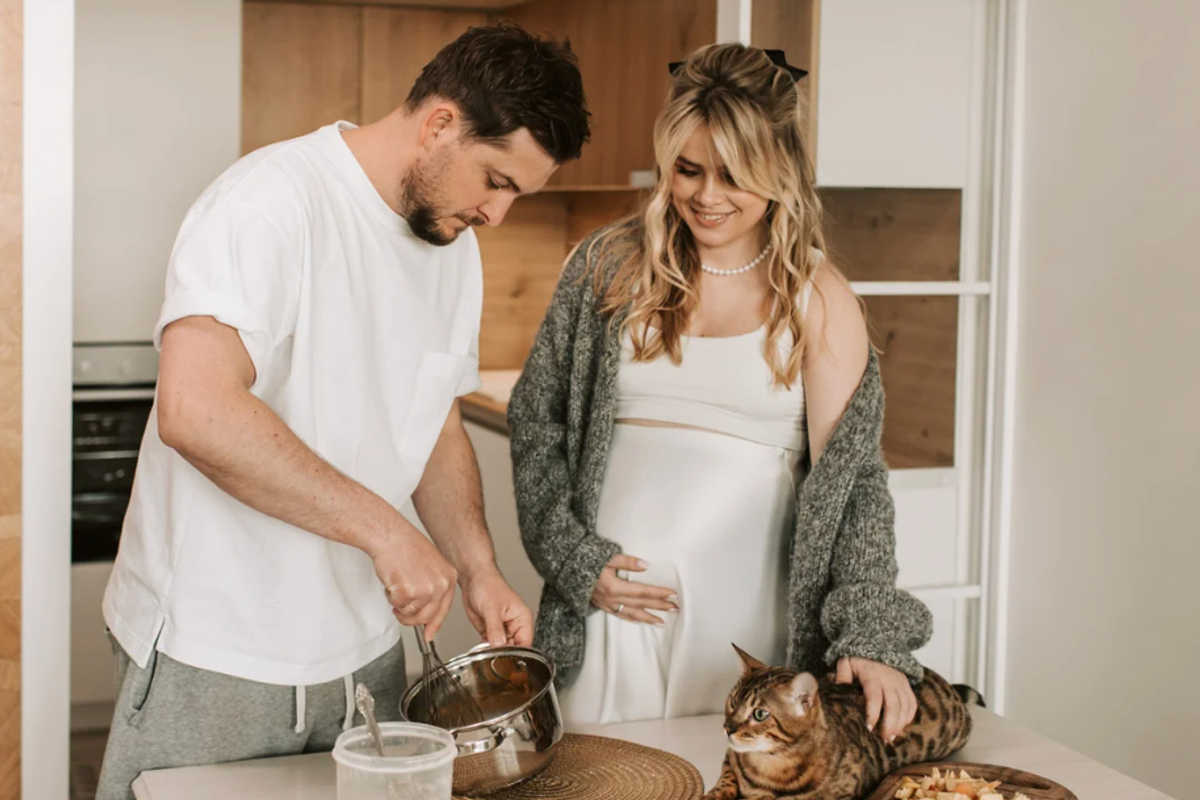The photo industry is changing. These 10 beautiful images show why that's a good thing.
Women of color are incredible. This company is making sure the world knows that too.
When Getty Images saw there wasn't enough positive images of women of color, they put their creativity into action.
Currently, more than 80% of photographers are white. Often criticized as only being accessible to the elite, white, and wealthy, the art community has struggled to make careers in the arts lucrative and sustainable for creatives that come from different socioeconomic backgrounds. Getty Images has spent years trying to change that.
"We've always been committed to making sure that the emerging minority photographers have the financial support they need to do their work," says Tristen Norman, head of creative insights and planning at Getty Images. "But beyond that, we're also committed to producing the right content and working with our incredibly large contributor community to do so."
Photo by Naila Ruechel/Getty Images.
Getty Images is amplifying beautiful imagery of diverse communities by working to put women of color both in front of and behind the camera.
To grapple with the very real glass ceiling in the art community — particularly in film and photography — that often impedes artists of color from pursuing the arts full time, Getty created two fellowships to get more women of color behind the camera. The Women Photograph Grant and the Array Grant are designed to foster and elevate female photojournalists from underrepresented communities.
Photo by Naila Ruechel/Getty Images.
"We're acknowledging our issues out loud, and we're taking those steps to correct the issues," Norman explains. "I'm pumped about the grant programs as they represent a more formal step that we're taking to address these challenges, specifically those for underrepresented communities of color that experience a lot of systemic and economic and inequities."
Photo by Rochelle Brock/Refinery29 for Getty Images.
One of the staff photographers currently carrying out the mission toward more inclusive artwork is photographer Naila Ruechel.
Photo by Naila Ruechel/Getty Images.
Ruechel has created stunning, bold, and bright images of women of color — a huge step toward representation and inclusion in the photojournalism industry.
"I think image making is a powerful tool that can really influence society," Ruechel says. "If we don't support diversity, we risk becoming more and more narrow-minded. We need diverse voices to broaden our understanding and acceptance of each other."
Photo by Naila Ruechel/Getty Images.
Ruechel's work serves as a powerful counternarrative to years of women of color being told they don't meet society's standards of beauty and femininity. Unsatisfied with black identity constantly being tied to slavery, she has advocated for photojournalism that shows women of color in beautiful, nuanced ways.
To achieve this goal, she knows that it requires putting women of color in front of and behind the camera to translate those diverse stories to a series of photos.
"I think if we demystify groups that are considered 'different,' we will encourage people to simply look at each other as what we are — humans," Ruechel says. "What I'm trying to achieve with my work is to humanize groups of people whose image have been largely misused, misrepresented, and/or underrepresented."
The industry's pervasive misrepresentations come from a fraught history between white photographers and communities of color.
For decades, women of color have largely been ignored in the high-fashion and high-art industries. Considering them subhuman or lesser-than, many major media companies have often failed to showcase indigenous communities and people of color in normal, human ways, instead catering to stereotypical tropes and problematic typecasts to appeal to antiquated ideas of what it means to be a person of color.
Photo by Caroline Tompkins/Refinery29 for Getty Images.
Most recently, National Geographic became one of the first mainstream media publications to formally apologize for these depictions. In an article titled "For Decades, Our Coverage Was Racist. To Rise Above Our Past, We Must Acknowledge It," editor-in-chief Susan Goldberg called for much-need changes in visual depictions of people of color:
"I want a future editor of National Geographic to look back at our coverage with pride — not only about the stories we decided to tell and how we told them but about the diverse group of writers, editors, and photographers behind the work."
Getty has worked to create an archive of photos of strong, empowered women throughout multiple decades of history, and it wants to take its commitment to inclusion even further.
Photo by Naila Ruechel/Getty Images.
"The very fact someone like me — a black woman with a multitude of other intersecting identities — has joined the creative team at Getty Images is a good indication that things are moving in the right direction within the industry," Norman explains. "That an organization of this size and visibility is so committed to ensuring that diverse talent is shaping their creative both inside and out is an incredible step in the right direction. There's still so much work to do, but the opening and welcoming of my seat and many others at the table is powerful and important."
Photo by Naila Ruechel/Getty Images.
Artwork and photojournalism aren't the only ways to shift the images that people see and the way they think.
A recent British study found that minority groups are represented in less than 20% of brand campaigns.
John Antoniello, a creative director at Sapientrazorfish, thinks that advertising may be one way to continue moving this mission forward. Having worked for various social awareness campaigns, such as HeForShe and Partnership for Drug Free America, Antoniello is aware of just how powerful a role marketing can play in getting society to value diverse imagery.
"I think, at large, the advertising industry is kind of now starting to make this turn, and I think it's going to be interesting to see how these large brands deal with this sort of new world that we live in," Antoniello says. "We have so many new companies and startups that are honing in on not only the kinds of people that they want to talk to but also the values that they stand for."
Photo by Stephanie Nnamani/Digital Vision/Getty Images.
Ruechel, Norman, and Antoniello make one thing very clear: It takes a lot of key players with similar values to make real progress.
When creating diverse imagery is both a priority and a value, we get closer to normalizing this type of imagery for mass audiences.
Photo by Renell Medrano/Refinery29 for Getty Images.
When organizations challenge themselves to increase diversity in front of and behind the camera, they signal that our ideas of beauty, culture, and everyday life need to include the experiences of all people.
When we do this, not only do we get beautiful art, we also create media that is representative of our full, incredible society.
We weren't paid to write this post. (We would tell you if we were!) We just think the work that Getty Images is doing is important and very cool.



 Millennial mom struggles to organize her son's room.Image via Canva/fotostorm
Millennial mom struggles to organize her son's room.Image via Canva/fotostorm Boomer grandparents have a video call with grandkids.Image via Canva/Tima Miroshnichenko
Boomer grandparents have a video call with grandkids.Image via Canva/Tima Miroshnichenko

 Worried mother and children during the Great Depression era. Photo by Dorthea Lange via Library of Congress
Worried mother and children during the Great Depression era. Photo by Dorthea Lange via Library of Congress  A mother reflects with her children during the Great Depression. Photo by Dorthea Lange via Library of Congress
A mother reflects with her children during the Great Depression. Photo by Dorthea Lange via Library of Congress  Families on the move suffered enormous hardships during The Great Depression.Photo by Dorthea Lange via Library of Congress
Families on the move suffered enormous hardships during The Great Depression.Photo by Dorthea Lange via Library of Congress
 A couple cooking in the kitchen with a cat sitting on the table beside chopped ingredients.
A couple cooking in the kitchen with a cat sitting on the table beside chopped ingredients.